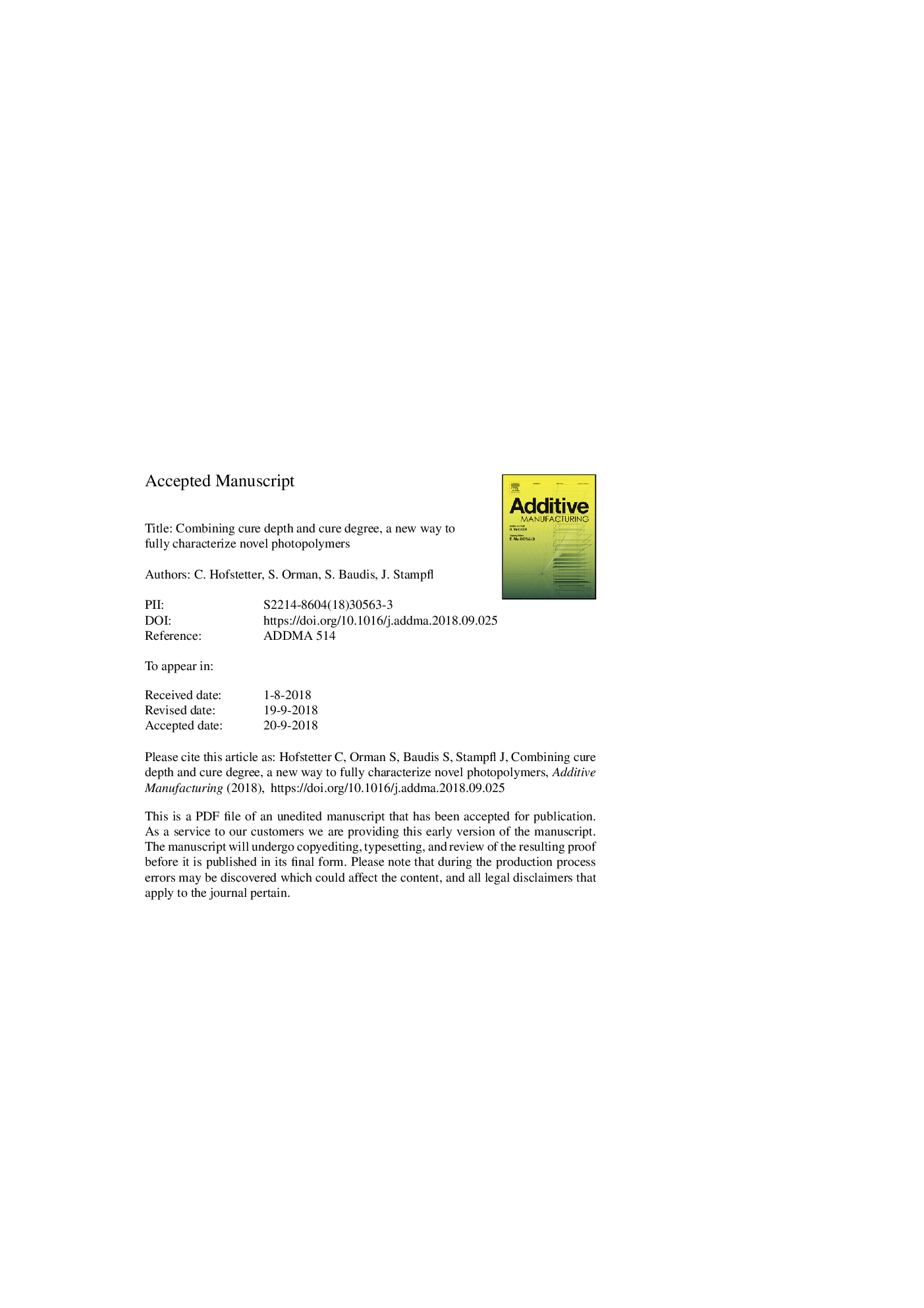| Article ID | Journal | Published Year | Pages | File Type |
|---|---|---|---|---|
| 11027737 | Additive Manufacturing | 2018 | 18 Pages |
Abstract
Bottom-up stereolithography has become a common lithography-based additive manufacturing technology (L-AMT) to fabricate parts with high feature resolution for biomedical applications. Novel vinyl ester based photopolymers, with their good biocompatibility and biodegradation behavior, have shown a promising capacity as bone replacement materials. Due to further tuning of the mechanical properties, those biophotopolymers exhibit reduced curing speed in comparison to highly crosslinked resins e.g. acrylates. The slow structuring of the polymer network results in difficulties at the printing process. The Jacobs working curve characterizes the cure- and penetration depth of resins, but gives no information about the mechanical properties of the cured layer. The information of cure depth and the mechanical properties of the cured layer (cure degree) is desired. In this work, the conditions at L-AMT during the structuring process with a real-time near-infrared photorheometer to evaluate the cure degree of a cured layer at constant cure depth was simulated. Therefore, the curing behavior of mixtures with variable amount of photoinitiator (PI) and light absorber (LA) of vinyl ester based biophotopolymers was investigated. It was found, that a high amount of LA is crucial for good mechanical properties at constant cure depth. Moreover, a technique is presented how to optimize a resin formulation regarding the LA content.
Keywords
Related Topics
Physical Sciences and Engineering
Engineering
Industrial and Manufacturing Engineering
Authors
C. Hofstetter, S. Orman, S. Baudis, J. Stampfl,
